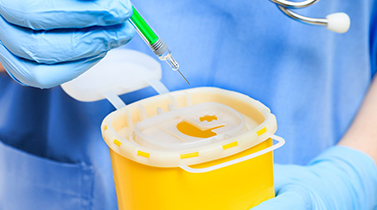

After collecting specimens with virus sampling tubes, c […]
After collecting specimens with virus sampling tubes, conventional specimens cannot be detected by PCR immediately. The swab sample is usually shipped with the sample. The virus itself will quickly dissolve outside the body and affect subsequent testing. During transportation, virus protection solution must be added. The following will take you to understand two types of virus sampling tubes: inactivated and non-inactivated.
In order to achieve different detection purposes, different virus sampling tubes need to be selected. The two virus sampling tubes widely used at that time had their own characteristics. In order to meet different testing requirements and different virus testing laboratory conditions, it is usually necessary to sample different virus sampling tubes.
Inactivated virus sampling tube: It is mainly a virus lysis preservation solution modified from nucleic acid extraction lysis solution. During the sampling period, a high concentration of guanidine salt can effectively inactivate the virus and effectively prevent the operator from being infected with the virus again. And it can be stored at room temperature for a relatively long time, thereby saving the storage and transportation costs of virus samples.
Non-inactivated virus sampling tube: It is mainly based on an improved virus adhesive preservation solution based on the transport medium. The non-inactivated virus sampling tube can maintain the activity of the virus and the integrity of the antigen and nucleic acid in vitro, maintain the protein coat of the virus and not easily decompose, and to a large extent maintain the originality of the virus sample. In addition to nucleic acid extraction and detection, the storage solution can also be used for virus culture, isolation and antigen detection. However, long-term storage after sampling requires strict low temperature.
It can be seen that different virus sampling tubes need to be selected according to different conditions. However, it should be noted that whether it is inactivated or defective, the virus sampling tube must be thoroughly inactivated and disinfected before sampling to ensure that there are no other microorganisms in the test tube, which may cause the virus to decompose. Other or other effects after sampling lead to false detection. After sampling the cotton swab, if inferior collection tools or preservation solutions are used, it will affect the subsequent test results and even lead to false positives for misdiagnosis.
